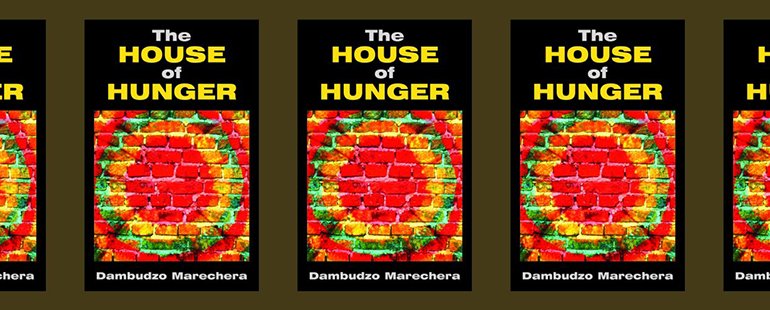Colonialism and Nationalism in The House of Hunger

Published just two years before Zimbabwe gained independence, Dambudzo Marechera’s 1978 novella and series of nine short stories titled The House of Hunger grapples with widespread postcolonial violence at the height of the movement for freedom from British colonialism in what was then Rhodesia. Winner of the Guardian Fiction Prize in 1979 and praised by Doris Lessing as a reading experience “like overhearing a scream,” The House of Hunger stuns the reader with heavily somatic writing, embodying hunger, alcoholism, domestic violence, and surveillance. In rendering quotidian and domestic forms of colonial oppression through physical ills and bodily leakages, Marechera makes visible the epistemic violence of colonialism, particularly as it manifests in the clashing of languages and the enforcement of colonial impositions within the home. Alongside his exoneration of colonial violence both externally apparent and pervasively overlooked, Marechera questions what will happen when independence comes, throwing into stark relief the metanarrative of the nation state and the concept of nationalism as a motivating structure for freedom.
The House of Hunger follows an unnamed narrator as he meets with old acquaintances, contends with domestic violence and state brutality, and grapples with the promise of independence. Skipping and jumping from the present, often set in beer halls, to childhood memories, the writing sometimes seamlessly weaves the two in tandem, instilling the sense of reading a dream—unmoored, cyclical, shocking. Graphic scenes of beatings, rapes, and “gut-rot”—a term for both the effects of alcoholism and a cheap alcohol used to keep workers dependent on the oppressive mechanisms of colonialism—dominate the short novella. The threadbare plot of the book sees the narrator reconnect with Harry, an old school friend with a penchant for “white chicks” who had been ostracized after it was discovered he was working as a spy to infiltrate student organizations for the police. Meanwhile, the narrator meets with another acquaintance, Julia, who wears a shirt with “legend ZIMBABWE” printed across the front, and the two exchange cryptic messages that hint to their involvement in resistance and radical organizing; the narrator himself is famous for writing poems. As the stylish, cool Harry attempts to rekindle a friendship with the narrator over drinks, his handcuffs continually slide into view, instilling a sense of constant surveillance over the plot and the flashbacks in which the narrator recounts memories of domestic violence at home and of competitions between boys in the school that turn either near-deadly, sexual, or both.
Throughout the novella, Marechera steadily evokes the physicality of hunger as a metaphor for knowledge and colonial violence, such as when “arrests became so much a part of one’s food that no one even turned a hair when two guerillas were executed one morning and their bodies later displayed to a group of schoolchildren.” In just the first few pages, he writes that “every morsel of sanity was snatched from you the way some kinds of bird snatch food from the very mouths of babes,” and later that he “was extremely thirsty for self-knowledge and curiously enough believed I could find that in ‘political consciousness.’ All the black youth was thirsty. There was not an oasis of thought which we did not lick dry.” Rendering the mental and intellectual starvation of Black youth in terms of morsels, thirst, and licking, Marechera embodies the invisible oppression of knowledge. Later on, he directly questions this relationship between mental and physical forms of subjugation, asking himself after discussing the failures of insurrection, “Is the pain of the mind greater than that of the body?”
This focus on physicality results in the heavy imagery of stains, most often when someone is beat up or killed. Stains appear frequently in the text, such as when the narrator’s brother hits his lover—who is actually pregnant with the narrator’s child rather than his brother’s—“until she was just a red stain.” The narrator describes being beaten himself when, half his face crushed, he “began to bleed. Becoming a stain. Stains!” while in another scene he and a friend confront a boy who beat a girl until she became unconscious and then raped her, “to smash the boy into a stain.” While waiting for the boy to appear, the narrator speaks with his mother, Nestar, who tells him her story of becoming a prostitute for white men after getting pregnant at twelve and thrown on the streets. He then notes that his “finger was stained with the ink from the pen I had used to jot down Nestar’s story.” Stains link bodily deterioration with social judgements and the degrading glare of colonialism. The stain metaphor expands further in the case of an old man who gets killed by a train. Marechera compares his death to dying “beneath the wheels of the twentieth century. There was nothing left but stains, bloodstains and fragments of flesh, when the whole length of it was through with eating him.” Adding on the line, “And the same thing is happening to my generation,” he connects stains to the gut-rot that he claims steadily deteriorates his generation, suggesting that the eye of colonialism perceives Black people—intentionally suppressed and exploited by addiction, brutality, and poverty—as stains on the white sheet of capitalist production.
One more striking use of stains links epistemic colonial violence with the physicality of Marechera’s writing, uncovering the more subtle colonial impositions of language, education, and family structure. In a flashback to his childhood days, the narrator recalls his mother telling him, “How dare you speak in English to me . . . You know I don’t understand it, and if you think because you’re educated . . .” after which she hits him. The narrator protests, beginning to say, “I’m not speaking in Eng—” but abruptly realizes that he is, in fact, using English, rather than Shona, his first language. The narrator later describes the splitting of these two languages, which makes him feel “severed from [his] own voice,” “gagged by this absurd contest between Shona and English,” and “indistinct but separate from both cultures.” In horror at his uncontrollable use of the colonial language with his mother, he tears up his English exercise books, then goes out to buy new books after watching his mother make a spectacle of eating the food he rejected from her in anger. Upon arriving home, he sees his father eating while his mother tells him about the torn-up exercise books. His father, without saying a word, strikes the narrator, knocks his teeth out, and finally pushes him “back into my corner on to the exercise-books. Staining them with blood.” In this short scene, Marechera evokes the violence of colonial language and education: the colonized subject is punished for using English as well as for rejecting it, all within his own familial domestic sphere that functions through its patriarchy as an extension of colonization, depriving him of nourishment while taunting him with its consumption.
In exploring this pervasiveness of colonial violence, the narrator questions the end-goal of the independence movement, raising a wariness about the concept of nationalism. He writes, “the freedom we craved for . . . was so alive in our breath and in our fingers that one became intoxicated by it even before one had actually found it,” comparing it to dreams of a feast, carnival, and funeral games. “Yet the feast, the carnival and the games were not there at all. . . . We knew that before us lay another vast emptiness whose appetite for things living was at best wolfish.” Continually referring to “those black heroes” of nationalist pride in the “legend of Zimbabwe,” Marechera affirms the emptiness of the nationalism as a goal of independence in a postcolonial context where violence, racism, and brutality ruled for so long, asserting that “the bulldozers have been and gone and where once our heroes danced there is nothing but a hideous stain.” He compares the legend of Zimbabwe to the frailty and inaccessibility of toilet paper:
But there was on the floor a star cut out of toilet paper.
Soft toilet paper.
I groped towards it and blew.
Ppfffphhp.
It flew upwards. It hovered unsteadily. It floundered. It sailed straight for the window. On its underside was written the legend ZIMBABWE.
Those black heroes …
I stuck my head out of the window.
The star shot upwards until it was no more than a glint upon the retina of the sky.
Somewhere a toilet flushed; and drowned the room.
Anticipating the reproduction of colonial violence in a freedom movement that harbors nationalist ideals in the glint of one’s eye, Marechera remains skeptical of the inherently imperial, brutal, racist, and exploitative nature of nationalist sentiment, rejecting its false promise of freedom from the ills of colonialism that remain embedded and generate new oppressions in postcolonial societies.
Through stains, bodily fluids, gut-rot, and hunger, Marechera renders the epistemic violence of colonialism in a shockingly physical narrative, bringing the invisible mechanisms of oppression into the same visual and somatic planes as the wounds from a fist-fight and the pangs of starvation. By continually reducing people to the idea of a stain on a sheet, Marechera recalls the devaluation and dehumanization of colonial violence both apparent and obscure, while simultaneously resisting the urge to rally behind the legend of Zimbabwe without questioning its capacity to reproduce certain structural inequalities and mechanisms of violence. Rejecting nationalism as a paradigm of postcolonial freedom due to its inseverable links to the imperial and colonial mindset, Marechera unearths a debate that continues to plague our globalized world and hopefully informs our methods of resistance to state-sanctioned violence and oppression.


